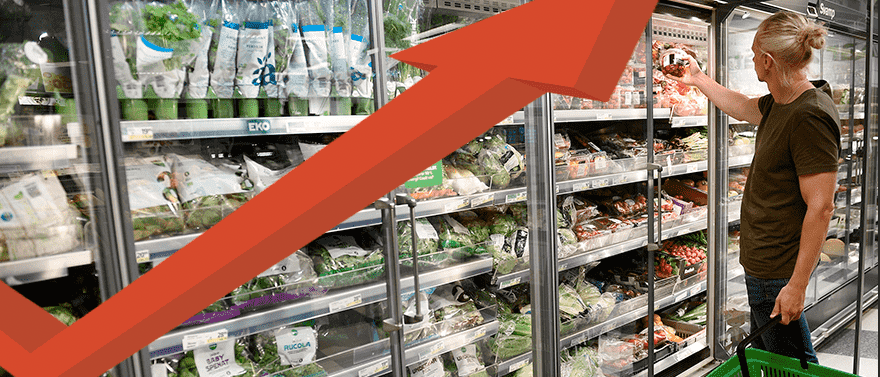Published: Less than 10 min ago
Have you had a shock at the vegetable counter lately?
Then you are not alone.
In one month, the price of several popular vegetables has increased.
– The problem with fruit and vegetables in particular is that they move quickly up and quickly down, says Carl Eckerdal, chief economist at Livsmedelsföretagen.
Yes. God, how expensive it has become. You can hardly afford anything green on your plate these days.
Barbro
Food is getting more and more expensive. In social media, many people have shared their shocking discoveries in grocery stores in recent times.
It is about tomatoes, peppers and other vegetables that are perceived as significantly more expensive. The price increase also applies to many other foods.
– We have never had faster cost increases, overall, in stores for food. It is absolutely sensational. It is noticeable to everyone, not least to the customers, says Carl Eckerdal, Chief Economist at Livsmedelsföretagen.
Price shock on leeks
Statistics Sweden measures the price change of various foodstuffs every month. There you can see that the price of several vegetables has gone up from December to January.
For example, the price of leeks has increased by 37 percent, cucumbers by 14 percent and tomatoes and carrots by 11 percent.
Fruit and vegetables are the category where you see the biggest price changes in a short time, both up and down, explains Carl Eckerdal.
– It is fresh produce in its most unprocessed form. There are no intermediate links. If those on the production side who grow peppers and tomatoes get increased costs or crop failure, then it hits with full force, he says.
Bad harvests and weak crown
According to him, there are several reasons why the prices of vegetables have increased.
– You have very fast movements. Tomato growers in Europe have increased energy costs, but other factors also play a role, they have had poor harvests.
The weak krona also plays a big role,
– We face exactly the same problems in Sweden as the rest of Europe, with the addition that we also have one of the worst currencies in the Western world. It is deeply unfortunate and should be debated more, he says.
“Will continue to increase”
And the vegetables will probably continue to be expensive. Now we are in the winter season, and to be able to see general price drops we have to wait for harvests from spring sowing and other things.
Carl Eckerdal, chief economist Livsmedelsföretagen, predicts that prices will continue to rise. Photo: Food companies
– I find it difficult to see, if we look at the entire fruit and vegetable category, that prices would fall noticeably. Individual products, yes, but I believe fruit and vegetables will continue to increase at a rapid pace. Just as I judge that the entire food basket will increase in the next few months, says Carl Eckerdal.
According to him, there are three factors that must come into play for us to be able to buy cheaper vegetables this year. The first is that the krona strengthens against the euro and the dollar. The second is that energy prices continue to stabilise, as we have seen them start to do in the last two months.
– The last hope, which applies specifically to fruit and vegetables, is that growing conditions will be favorable in Europe and also within domestic production, says Eckerdal.
– If all three of these things move in the right direction, then we will see falling prices.
Facts
So the prices of vegetables increased
The figure shows the price increase in percentage between December 2022 and January 2023
Potato: – 1.61
Carrots: 10.58
Cabbage: −22.77
Yellow onion: -1.70
Tomatoes: 10.70
Cucumber: 14.39
Salad: 2.20
Salad bowl: -0.77
Cauliflower: 8.54
Leek: 36.83
Pepper: 5, 97
(Source: Statistics Sweden)
Read moreFacts
The horticulture industry
The horticulture industry consists of approximately 1,800 companies in Sweden.
Within the horticulture industry – that is, the cultivation of vegetables and plants, among other things – it is the greenhouses that account for the majority of electricity consumption.
The total energy consumption in Swedish greenhouse cultivation amounts to approximately 0.6 TWh annually.
LRF calculates that electricity costs for agriculture have increased by SEK 5.3 billion since winter 2021. Of these increased costs, greenhouses account for SEK 2.1 billion.
(Source: LRF)
Read more
